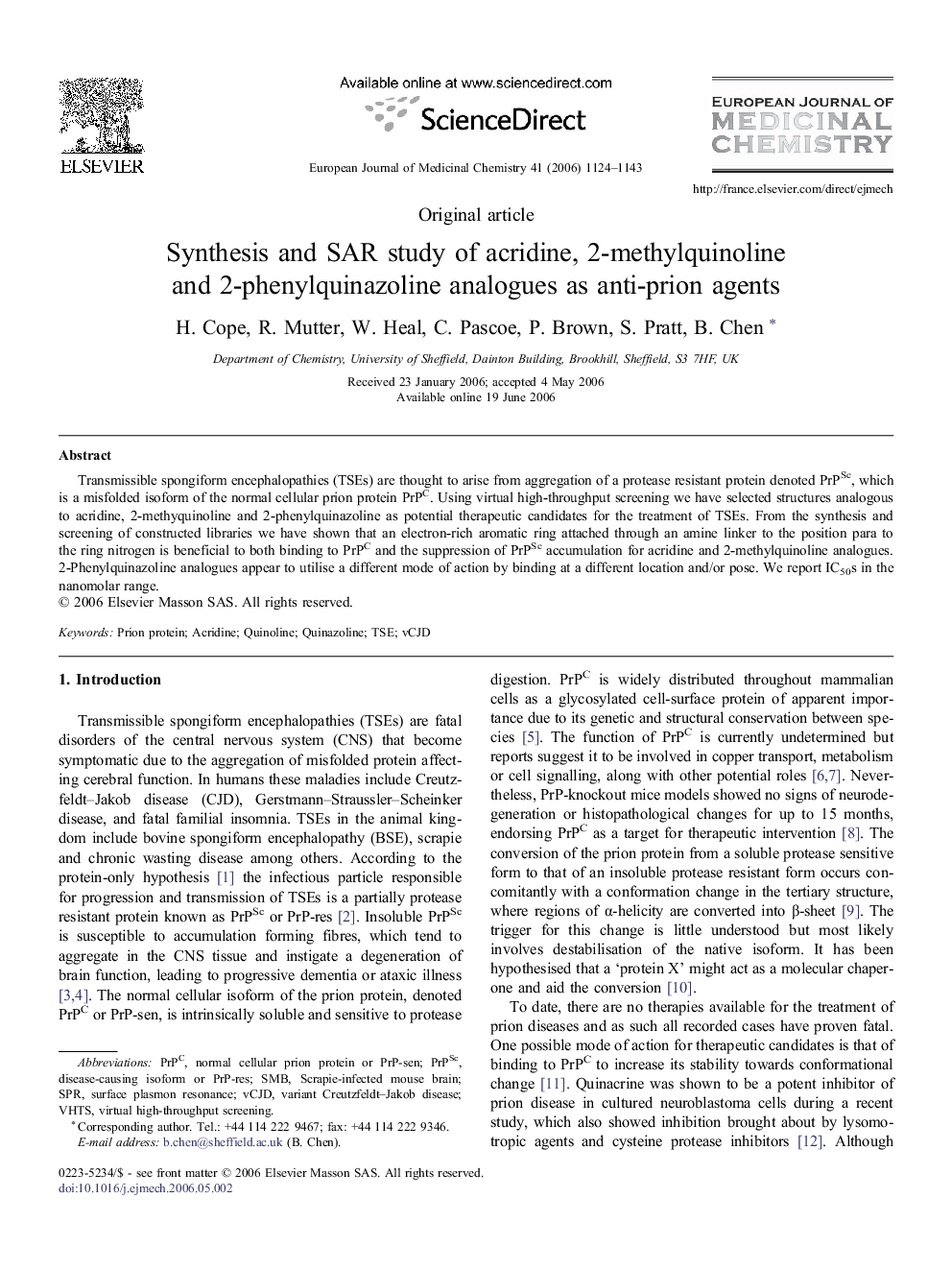| کد مقاله | کد نشریه | سال انتشار | مقاله انگلیسی | نسخه تمام متن |
|---|---|---|---|---|
| 1399979 | 1501231 | 2006 | 20 صفحه PDF | دانلود رایگان |

Transmissible spongiform encephalopathies (TSEs) are thought to arise from aggregation of a protease resistant protein denoted PrPSc, which is a misfolded isoform of the normal cellular prion protein PrPC. Using virtual high-throughput screening we have selected structures analogous to acridine, 2-methyquinoline and 2-phenylquinazoline as potential therapeutic candidates for the treatment of TSEs. From the synthesis and screening of constructed libraries we have shown that an electron-rich aromatic ring attached through an amine linker to the position para to the ring nitrogen is beneficial to both binding to PrPC and the suppression of PrPSc accumulation for acridine and 2-methylquinoline analogues. 2-Phenylquinazoline analogues appear to utilise a different mode of action by binding at a different location and/or pose. We report IC50s in the nanomolar range.
Figure optionsDownload as PowerPoint slide
Journal: European Journal of Medicinal Chemistry - Volume 41, Issue 10, October 2006, Pages 1124–1143